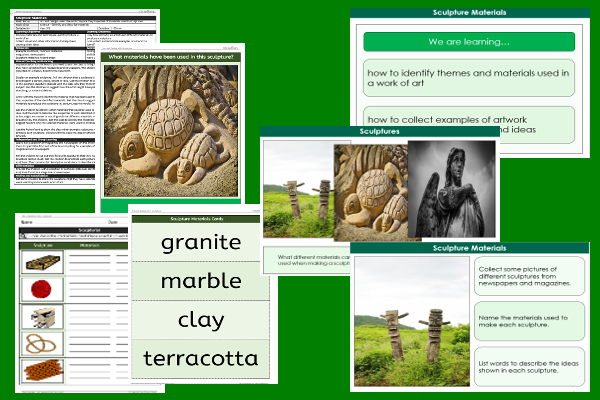Lesson One – Sculpture Materials

This art and design teaching pack for Key Stage Two gets the children to explore how to describe and compare the properties of some of the different materials that have been used to construct a range of sculptures.
The class can suggest and record reasons as to why particular materials have been combined and shaped to produce sculptures on different themes and ideas.
Download this teaching pack including a lesson plan, classroom activities and an interactive presentation to explore how to describe and compare the properties of some of the different materials that have been used to construct a range of sculptures
Activities in this teaching pack include display posters to identify and describe some of the different materials and themes used in a work of art, a worksheet to record and explain specific materials have been used in a sculpture construction and a set of cards to name the materials that have been combined together in a sculpture.
The interactive presentation can be used to explore how to describe and compare the properties of some of the different materials used in sculptures.
This lesson is part of an art and design scheme of work to get the children to explore how to shape and combine different recycled materials to produce a sculpture reflecting the theme of recycling. There are teaching activities for shared learning, differentiated worksheets to support independent learning and interactive presentations to introduce concepts and key skills.
-

Determinant Lists
Explain and model how to make lists of objects used and found in different locations to match the correct determinants of a and an
-

English SPAG Assessment
Assess abilities in composing sentences for fiction and non-fiction using the correct spellings, punctuation marks and grammar vocabulary phrases
-

Maths Arithmetic Assessment
Assess abilities in solving arithmetic number problems for addition, subtraction, multiplication and division when working with informal and formal written calculations
-

Environment
Identify and describe some of the special landscapes and locations that can be found in the world and reflect on how they can be protected and preserved for the future
